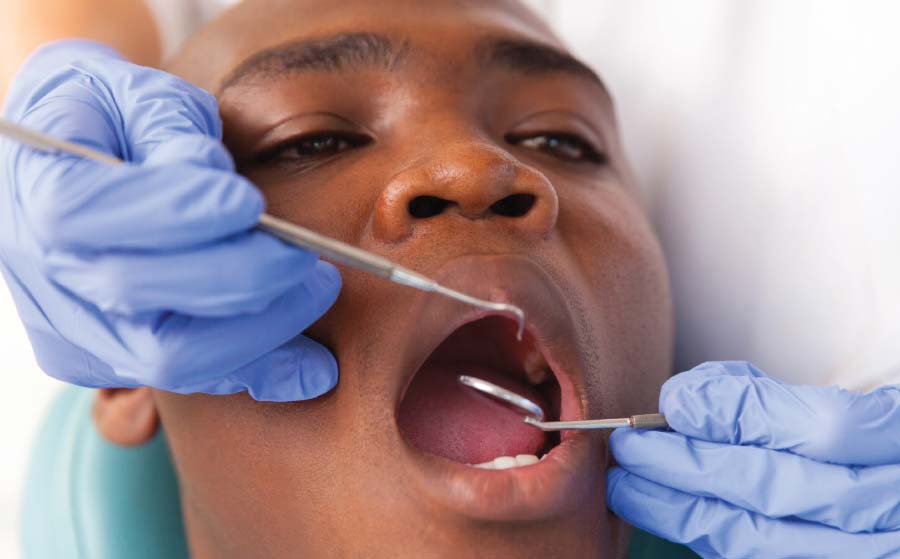Minimally Invasive Dentistry
When Less Care Is More
 |
Most people regard the sound of the dental drill with dread, but no one can deny that it has played a crucial part in the maintenance of oral health. That still doesn't change the fact that most people would like to hear less of it, or not hear it at all.
Modern dentistry is making great strides towards turning this into a reality. With the help of scientific research, new technology and new materials, dentists can diagnose disease earlier, stop dental caries (tooth decay) before it starts and even reverse it in its earliest stages. In fact, it can be treated by removing a minimum of natural enamel or dentin. We call this Minimally Invasive Dentistry (MID).
The goal of MID or micro-dentistry is to conserve healthy tooth structure by detecting, diagnosing, intercepting, and treating dental caries at the microscopic level. A focus on less invasive procedures also often means no pain, less anxiety and less cost.
When Less Is More
With all we know in the current era, it may surprise you that tooth decay is still one of the most pervasive diseases of our time and dentists still spend the majority of their time placing and replacing restorations — filling teeth to repair the ravages of decay. Until quite recently dentists were still using techniques to treat decay developed by G.V. Black (1836-1915), the father of modern dentistry. He developed a classification for naming the surfaces of teeth that decay and a protocol for treating and restoring decayed teeth. Part of this was called "extension for prevention," in which tooth structure was removed not only from decayed areas, but also from areas more vulnerable to decay, to make them more easily cleansable. Thus cavities and fillings were apt to be larger than they needed to be, at least by modern standards.
Given the prevalence of tooth decay, a more limited understanding of the caries (disease) process, limitations of the available materials and the lack of proven alternative therapies, this was thought necessary at the time.
The concept of minimally invasive treatment was initially introduced in the medical field and adapted to dentistry in the early 1970s. It was heralded by the application of diamine silver fluoride (for arresting and treating decay), and the development of preventive resin restorations (tooth-colored fillings) later that decade.
An important factor that led to minimally invasive techniques was research that showed that G.V. Black's concepts did not guarantee that restored teeth would not re-decay. Later developments reduced the need to remove healthy tooth structure, and adhesive restorative materials were developed that bonded to teeth making them stronger, and also required less destructive cavity preparations to retain them.
Today, advancements in technology and a better understanding of the process of remineralization — the ability to re-deposit calcium back into early enamel-decaying surfaces — have resulted in a reappraisal of techniques for repair of damaged tooth structure.
Risk Assessment
The minimally invasive model in dentistry is based on caries risk assessment, early detection, remineralization and preservation of tooth structure, rather than repair and replacement of failed restorations.
The minimally invasive model in dentistry is based on caries risk assessment, early detection, remineralization and preservation of tooth structure, rather than repair and replacement of failed restorations.
Dr. John Featherstone et. al. developed Caries Management By Risk Assessment (CAMBRA) a decade ago. It allows dentists to assess personal risk for tooth decay by looking for decay-causing bacteria, quality and quantity of healthy saliva (necessary for neutralizing acids), and your diet (especially sugar consumption) among other factors.
It also includes risk reduction and health promotion factors, for example: daily use of a specific mouthwash to reduce acidity, making the mouth neutral or slightly alkaline to inhibit acid-producing bacteria; limiting sugar and carbohydrates that the bacteria feed on to produce acid; practicing good oral hygiene to remove bacterial (plaque) biofilm. Caries prevention also includes the use of fluoride in various forms, and sealants to seal areas vulnerable to decay.
Decay Detection — Earlier Than Ever Before
Digital Radiography: Utilizing a digital x-ray sensor and storing high resolution images in electronic files instead of traditional x-ray films, these images are instant and can easily be enhanced to assist in earlier diagnosis. Digital imaging reduces the already low radiation exposure from dental x-rays and can mean between 50% to 80% less radiation.
Magnification: Surgical loupes or dental microscopes can magnify operating sites and provide bright homogenous lighting allowing dentists to see things which are not visible to the naked eye. This can mean early detection of disease and additional treatment options.
Intraoral Cameras: ("intra"- within; "oral"- the mouth) cameras use small wands to take digital pictures (still or video). They are used while you are in the dental chair and project an immediate and enlarged image of the inside of your mouth onto a screen. This technology allows your dentist to show you a magnified image of any problem in real time and consult with you about various treatment options.
Caries Detection Devices: In addition, yet other techniques — laser fluorescence, infrared photos or optical scanning — provide information on how deep decay is in a tooth. This information can guide the dentist and team in deciding the best protocols to either remineralize or restore the tooth to health.

